This article is co-authored by Paul Morgan.
What is bullying?
Bullying occurs when children experience unwanted and aggressive behavior from more powerful peers repeatedly over time. Bullying is considered a type of school violence (Arseneault, 2018; Yang et al., 2018).
| Types of Bullying | Definition | Hypothetical Example of Bullying | Potential Outcomes |
|---|---|---|---|
Verbal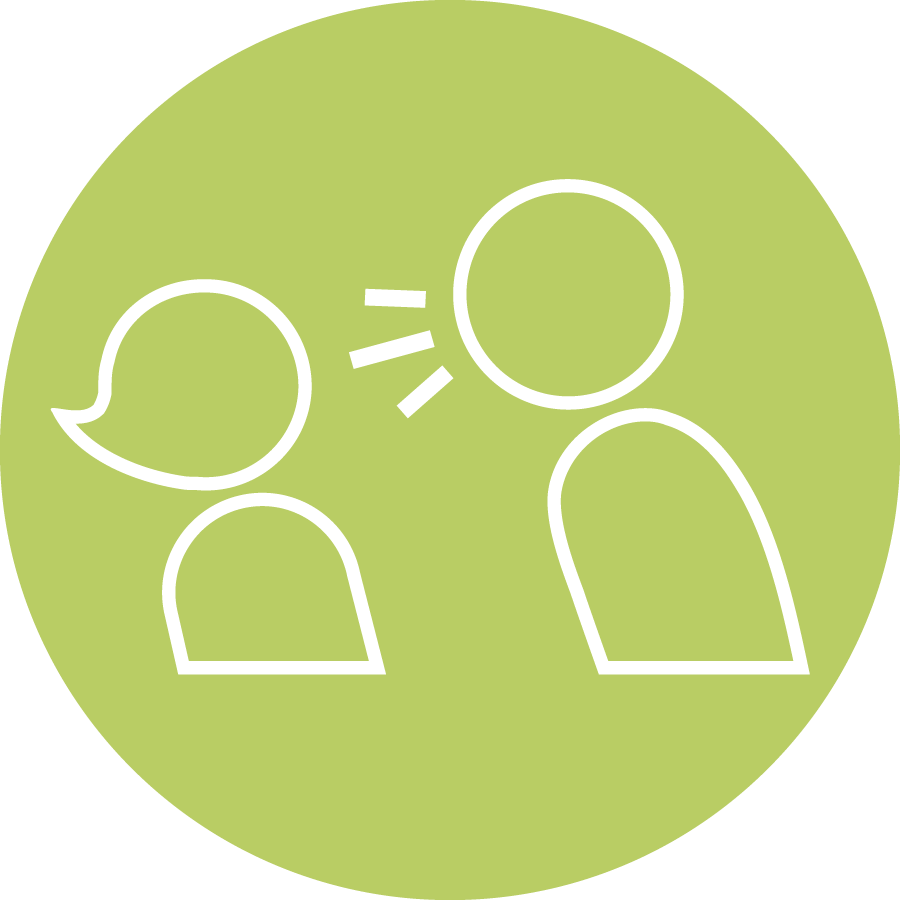 |
The child is frequently teased, made fun of, or called names by other children | Kelly loudly exclaims, “Did ‘Fat Angela’ really think she could pull off that shirt?” as she passes Angela in the lunchroom. When Angela looks upset, Kelly rolls her eyes and says, “Can’t you take a joke?” | Angela develops low self-esteem and a poor body image, which puts her at risk for eating disorders and self-harm. |
Social |
The child is frequently purposefully excluded from playing with other children | Jaxson is unfriended and blocked on social media by his friends Asher and Jesse. Asher tells Jaxson, “We’re not allowed to be friends with you anymore because Jesse says you’re too annoying.” | Jaxson is so distraught over losing his friends that his grades start slipping because he can’t focus in class. |
Reputational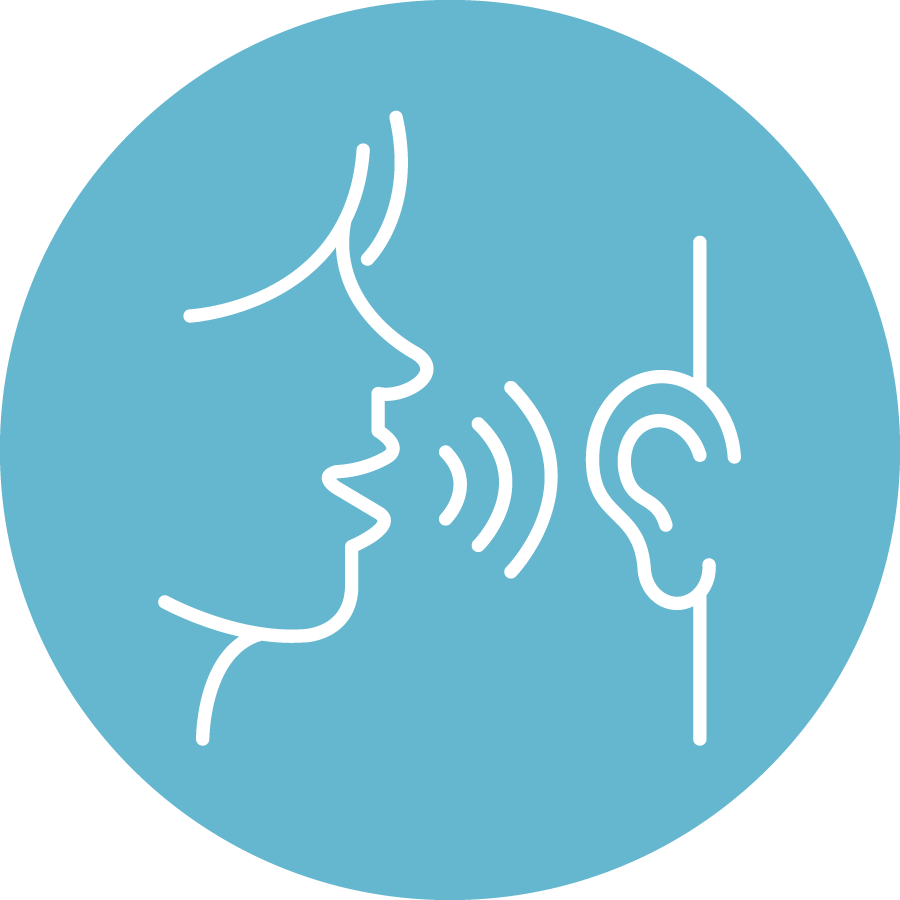 |
Other children frequently tell lies or untrue stories about the child | Damian tells his whole class that he heard Wyatt wets the bed. Other children start calling him a “baby” when they pass him at school. | Wyatt is hurt by this rumor, so he retaliates against Damian by posting a bad photo of Damian on Snapchat. |
Physical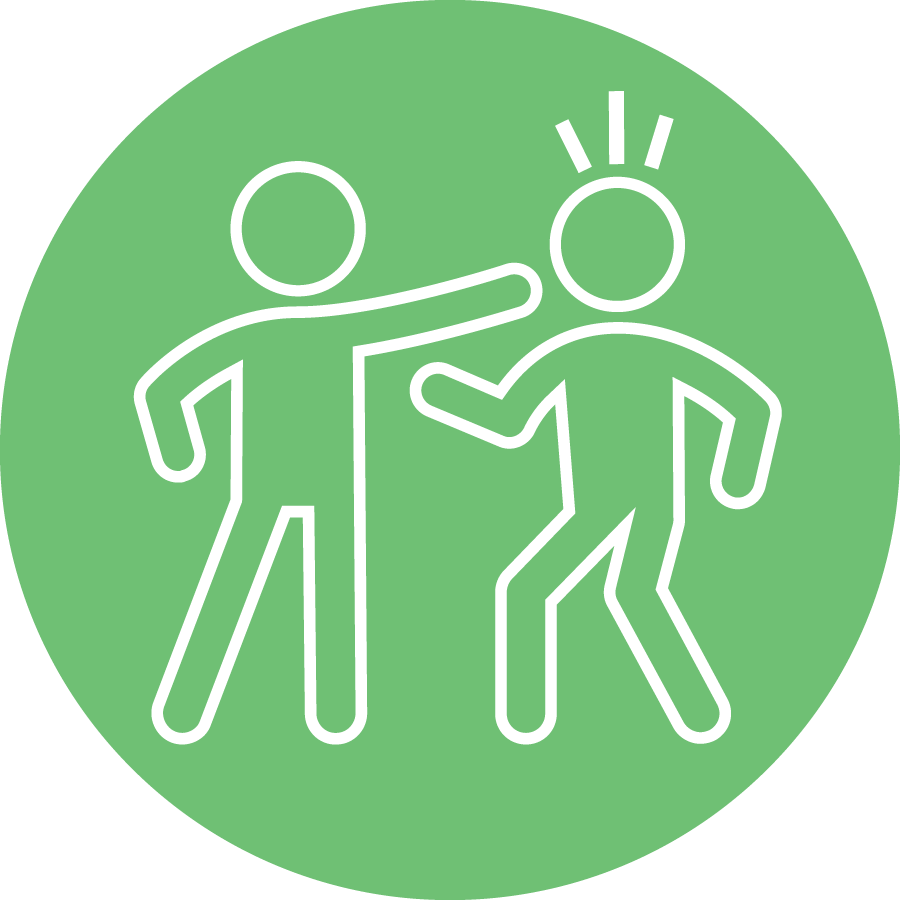 |
The child is frequently pushed, shoved, slapped, hit, or kicked | One day at school, Brittney yanks Monique to the ground by her hair when she walks past her in the hallway. | Monique becomes socially withdrawn, depressed, and nervous to go to school. |
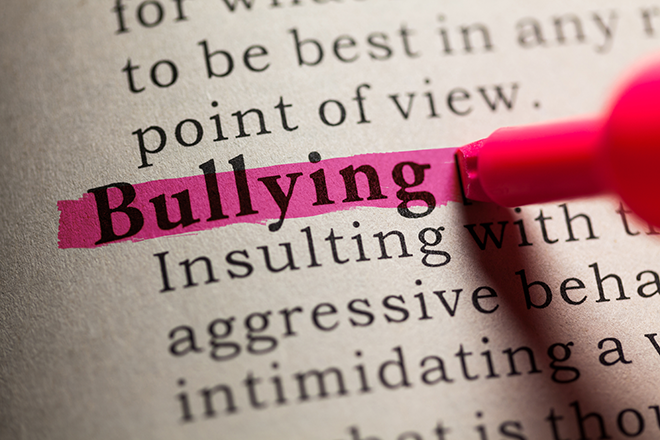
The risks of bullying victimization
Victims of bullies may struggle during school (Schoeler et al., 2018; Sigurdson et al., 2015). In the examples above, Angela, Jaxson, Wyatt, and Monique experience different types of bullying that each have social, emotional, cognitive, behavioral, academic, and physical consequences.
Children who are frequently bullied are at risk for later mental health challenges, substance abuse, and even unemployment as adults (Arseneault, 2018; Takizawa et al., 2014; Wolke et al., 2013). The consequences of bullying are as impactful on these later risks as being placed in foster care or experiencing neglect or abuse (Zarate-Garza et al., 2017).
Our research: Which children typically experience bullying?
Because bullying can impact health and wellbeing, it is important to prevent bullying early in elementary school. As researchers, we were curious about which students were most likely to be bullied and/or to become bullies. We analyzed data from more than 10,000 children who are likely to graduate from high school in 2023, and who responded to surveys administered in grades 3-5 (Morgan et al., 2022; 2023). We asked:
- Who are the typical bullies? Who are the typical victims? We wanted to learn more about bullies and victims in early elementary school, which is a critical period for bullying screening and prevention (Kljakovic & Hunt, 2016; Yeager et al., 2015). It is important to target interventions and supports to the right children. But sometimes the boundaries are blurry, because being victimized also increases children’s risks for becoming bullies themselves (Walters, 2021). In the example above, Wyatt is hurt by the rumor Damian started, and he retaliates by engaging in cyber bullying. Children who are both bullies and victims are especially at risk of experiencing adverse outcomes (Lereya et al., 2015; Wolke et al., 2013). Understanding which victimized children are most likely to later become bullies is important to these screening and prevention efforts in elementary school.
- What kind(s) of bullying do children experience? Similarly, distinguishing between verbal, social, reputational, and physical types of bullying may help schools and parents more directly address the different psychological needs of children experiencing bullying in various forms. (Casper & Card, 2016)
- Before sharing the results, an important note: There is nothing specific to ANY demographic group (e.g., based on race, gender, or language) that deterministically increases or decreases a child’s likelihood of being victimized or becoming a bully. Rather, these likelihoods are influenced by external circumstances that can differentially affect children from different demographic groups, such as the experience of systemic racism or gender- or language-based discrimination.
What did we find? The table below summarizes the distinguishing characteristics of victims, non-victims, bullies, and non-bullies.
| Who is more likely to be frequently bullied? | Who is less likely to be frequently bullied? | Who is more likely to become a bully? | Who is less likely to become a bully? |
|---|---|---|---|
| BEHAVIORAL REGULATION | |||
| More likely to be bullied | Less likely to be bullied | More likely to be bully | Less likely to be bully |
|
|
|
|
| RACIAL, ETHNIC, LANGUAGE IDENTITY | |||
| More likely to be bullied | Less likely to be bullied | More likely to be bully | Less likely to be bully |
|
|
|
|
| SEX | |||
| More likely to be bullied | Less likely to be bullied | More likely to be bully | Less likely to be bully |
|
|
||
| FAMILY BACKGROUNDS | |||
| More likely to be bullied | Less likely to be bullied | More likely to be bully | Less likely to be bully |
|
|
|
|
| ACADEMIC ACHIEVEMENT | |||
| More likely to be bullied | Less likely to be bullied | More likely to be bully | Less likely to be bully |
|
|||
Note: Subtypes of victimization are indicated by the following superscripted numbers (we could not differentiate subtypes of bullies): 1Reputational bullying; 2Verbal bullying; 3Social bullying; 4Physical bullying; 5All types of bullying.
When untangling some of the risk and protective factors a bit more, we found that Black boys are at greater risk for reputational victimization and for becoming bullies during elementary school. This may occur because of historical and ongoing racism and discrimination in the U.S., in which Black children are involved in reactive aggression and/or victimized by racial acts of violence (Goldbach et al., 2018). Black children were also more often reported by their teachers to display “acting out” behaviors, which is associated with a likelihood to be bullied and to become bullies. However, scholars have repeatedly found that teachers tend to expect Black children to have poorer behavior than other children, even when their behavior is similar (Gilliam et al., 2016; Huang, 2018; Okonofua & Eberhardt, 2015; Tenenbaum & Ruck, 2007).
 What does this mean for school personnel, like teachers, counselors, and administrators?
What does this mean for school personnel, like teachers, counselors, and administrators?
Pay close attention to children who are frequently engaging in externalizing problem behaviors by second grade.
- Consistent with prior research (Boivin et al., 2013; Oncioiu et al., 2020), we found that children who reportedly displayed externalizing problem behaviors in kindergarten to second grade were more likely to be bullies and victims of any type of bullying.
- Some children’s early experiences led to externalizing problem behaviors that, in turn, increased their chances of being victims or bullies. These other factors included having a single parent, a parent who used harsh disciplinary practices (e.g., spanking, yelling, threatening, making fun of their children), or a parent who thought parenting was difficult.
- The earlier that schools can help these children to learn coping and self-regulation skills, the less likely these children are to be bullied or to become bullies later in elementary school (Boivin et al., 2013; Kljakovic & Hunt, 2016; Oncioiu et al., 2020).
- Resources:
Intervene early with both social-emotional and academic supports.
- School-based interventions are widely available and effective at reducing bullying perpetration and victimization (Gaffney et al., 2021), and they are most effective when implemented before or at the transition to elementary school (Lebrun-Harris et al., 2019; Oncioiu et al., 2020; Walters, 2021).
- Children experiencing reading difficulties are more likely to self-report feeling angry, sad, and unpopular during elementary school. (Morgan et al., 2012). Schools who identify and support children who start to struggle academically may help to improve the children’s behavior and social functioning, which may help children’s risks for experiencing bullying or victimization (Chong et al., 2014; Morgan et al., 2012; Turunen et al., 2017, 2021).
- Resources:
- Positive Action Evidence-based Bullying Prevention Programs & Curriculum
- The Hexagon Tool can help school staff to identify effective programs or practices that fit with the local context.
- The Pyramid Model is a tiered framework of evidence-based practices that can provide universal supports to children at all levels of need.
- Bounce Back helps K–5 students who are experiencing traumatic stress symptoms.
Include parents in bullying intervention and prevention efforts.
- Including parents in bullying intervention and prevention efforts contributes to the success of these efforts (Carney et al., 2015; de Vries et al., 2018; Lereya et al., 2013; Ttofi & Farrington 2011).
- Parents’ use of harsh discipline (like spanking, yelling, threatening, or making fun of their children) and parents’ self-report that they think parenting is harder than expected were both related to children’s challenging behaviors, which in turn increased children’s likelihood of becoming bullies. This suggests a need for parenting education and support programs that can help parents learn new strategies to address or prevent their child from displaying challenging behaviors (see resources below!).
- Resources:
Don’t ignore bullying when it happens.
- Explicitly discuss bullying scenarios and teach a culture of empathy to students.
- Make sure the victim is safe and work out a system to prevent future bullying incidents with that child.
- Seek out evidence-based programs that can support students’ mental health in schools. Consider referring both bullies and victims of bullies for more targeted mental health support.
- Resources:
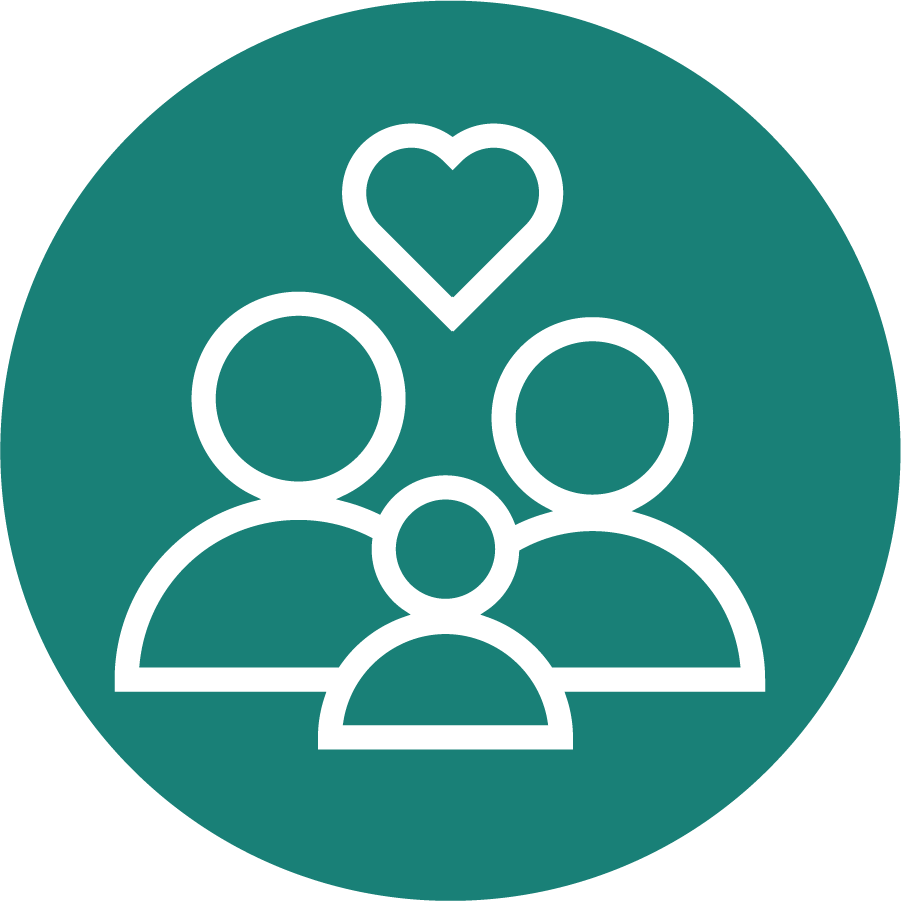 What does this mean for parents?
What does this mean for parents?
Talk to your child early and often.
- If your child suddenly experiences behavioral or academic changes, they may be experiencing bullying. These changes might include:
- Avoiding activities and areas that do not have adult supervision where bullies might attack (e.g., bathrooms)
- Getting upset after a phone call, text, or email, or after going online
- Losing friends
- Spending more time alone or skipping out on activities they used to enjoy
- Saying negative things about themselves
- Make sure your child feels heard and supported if they come to you. If they report being bullied or you’re concerned about bullying, you should offer emotional support and consider seeking professional help (Leff & Feudtner, 2017).
- Resources:
If you feel “burned out” as a parent or are concerned about your child’s behavior, seek out support.
- Following the Covid-19 pandemic, a study found that two-thirds of working parents feel burned out or are experiencing chronic stress and exhaustion. Parents experiencing burnout are much more likely to insult, criticize, curse at, and/or spank their children (Gawlik & Melnyk, 2022). In our study, we found these parenting behaviors to be associated with increased risk for children becoming a bully.
- Resources:
References
Boivin, M., Brendgen, M., Vitaro, F., Forget-Dubois, N., Feng, B., Tremblay, R. E., & Dionne, G. (2013). Evidence of gene-environment correlation for peer difficulties: Disruptive behaviors predict early peer relation difficulties in school through genetic effects. Development and Psychopathology, 25(1), 79–92. https://doi.org/10.1017/S0954579412000910
Carney, R., Stratford, B., Moore, K. A., Rojas, A., & Daneri, P. (2015, November). What works for reducing problem behaviors in early childhood: Lessons from experimental evaluations. Child Trends. http://www.childtrends.org/wp-content/uploads/2015/10/201532WhatWorksProblemBehaviorsNovUpdate.pdf.
Casper, D. M., & Card, N. A. (2017). Overt and Relational Victimization: A Meta-Analytic Review of Their Overlap and Associations With Social–Psychological Adjustment. Child Development, 88(2), 466–483. https://doi.org/10.1111/cdev.12621
Chong, W. H., Moore, D. W., Nonis, K. P., Tang, H. N. K., & P, & Wee, S. (2014). Mission I’m possible: Effects of a community-based project on the basic literacy skills of at-risk kindergarteners. Infants & Young Children, 27, 60–73. https://doi.org/10.1097/IYC.0b013e3182a60281
de Vries, E. E., Verlinden, M., Rijlaarsdam, J., Jaddoe, V. W. V., Verhulst, F. C., Arseneault, L., & Tiemeier, H. (2018). Like father, like child: Early life adversity and children’s bullying behaviors in elementary school. Journal of Abnormal Child Psychology, 46(7), 1481–1496. https://doi.org/10.1007/s10802-017-0380-8
Gaffney, H., Ttofi, M. M., & Farrington, D. P. (2021). Effectiveness of school-based programs to reduce bullying perpetration and victimization: An updated systematic review and meta-analysis. Campbell Systematics Review, 17(2), e1143. https://doi.org/10.1002/cl2.1143
Gawlik, K., & Melnyk, B. M. (2022, May). Pandemic Parenting: Examining the Epidemic of Working Parental Burnout and Strategies to Help. The Ohio State University Office of the Chief Wellness Officer and College of Nursing. Retrieved from https://wellness.osu.edu/sites/default/files/documents/2022/05/OCWO_ParentalBurnout_3674200_Report_FINAL.pdf
Gilliam, W. S., Maupin, A. N., Reyes, C. R., Accavitti, M., & Shic, F. (2016). Do Early Educators’ Implicit Biases Regarding Sex and Race Relate to Behavior Expectations and Recommendations of Preschool Expulsions and Suspensions? [Research Brief]. Yale University Child Study Center. https://www.jsums.edu/scholars/files/2017/03/Preschool-Implicit-Bias-Policy-Brief_final_9_26_276766_5379.pdf
Goldbach, J. T., Sterzing, P. R., & Stuart, M. J. (2018). Challenging conventions of bullying thresholds: Exploring differences between low and high levels of bully-only, victim-only, and bully-victim roles. Journal of Youth and Adolescence, 47, 586600. https://doi.org/10.1007/s10964-017-0775-4
Huang, F. L. (2018). Do Black students misbehave more? Investigating the differential involvement hypothesis and out-of-school suspensions. Journal of Educational Research, 111(3), 284–294. https://doi.org/10.1080/00220671.2016.1253538
Kljakovic, M., & Hunt, C. (2016). A meta-analysis of predictors of bullying and victimisation in adolescence. Journal of Adolescence, 49, 134–145. https://doi.org/10.1016/j.adolescence.2016.03.002
Lebrun-Harris, L. A., Sherman, L. J., & Miller, B. (2020). State-level prevalence of bullying victimization among children and adolescents, National Survey of Children’s Health, 2016–2017. Public Health Reports, 135(3), 303–309. https://doi.org/10.1177/0033354920912713
Leff, S. S., & Feudtner, C. (2017). Tackling bullying: Grounds for encouragement and sustained focus. Pediatrics, 139(6), e20170504. https://doi.org/10.1542/peds.2017-0504.
Lereya, S. T., Copeland, W. E., Zammit, S., & Wolke, D. (2015). Bully/ victims: A longitudinal, population-based cohort study of their mental health. European Child and Adolescent Psychiatry, 24, 1461–1471. https://doi.org/10.1007/s00787-015-0705-5
Lereya, S. T., Samara, M., & Wolke, D. (2013). Parenting behavior and the risk of becoming a victim and a bully/victim: A meta-analysis study. Child Abuse and Neglect, 37(12), 1091–1108. https://doi.org/10.1016/j.chiabu.2013.03.001
Morgan, P. L., Farkas, G., Woods, A. D., Wang, Y., Hillemeier, M. M., & Oh, Y. (2023). Factors Predictive of Being Bullies or Victims of Bullies in US Elementary Schools. School Mental Health. https://doi.org/10.1007/s12310-023-09571-4
Morgan, P. L., Farkas, G., & Wu, Q. (2012). Do poor readers feel angry, sad, and unpopular? Scientific Studies of Reading, 16, 360–381. https://doi.org/10.1080/10888438.2011.570397
Morgan, P. L., Woods, A. D., Wang, Y., Farkas, G., Oh, Y., Hillemeier, M. M., & Mitchell, C. (2022). Which Children are Frequently Victimized in US Elementary Schools? Population-Based Estimates. School Mental Health, 14(4), 1011–1023. https://doi.org/10.1007/s12310-022-09520-7
Okonofua, J. A., & Eberhardt, J. L. (2015). Two strikes: Race and the disciplining of young students. Psychological Science, 26(5), 617–624. https://doi.org/10.1177/0956797615570365
Oncioiu, S. I., Orri, M., Boivin, M., Geoffroy, M. C., Arseneault, L., Brendgen, M., Vitaro, F., Navarro, M. C., Galéra, C., Tremblay, R. E., & Côté, S. M. (2020). Early childhood factors associated with peer victimization trajectories from 6 to 17 years of age. Pediatrics. https://doi.org/10.1542/peds.2019-2654
Schoeler, T., Duncan, L., Cecil, C. M., Ploubidis, G. B., & Pingault, J. B. (2018). Quasi-experimental evidence on short-and longterm consequences of bullying victimization: A meta-analysis. Psychological Bulletin, 144(12), 1229–1246. https://doi.org/10.1037/bul0000171
Sigurdson, J. F., Undheim, A. M., Wallander, J. L., Lydersen, S., & Sund, A. M. (2015). The long-term effects of being bullied or a bully in adolescence on externalizing and internalizing mental health problems in adulthood. Child and Adolescent Psychiatry and Mental Health, 9, 1–13. https://doi.org/10.1186/s13034-015-0075-2
Takizawa, R., Maughan, B., & Arseneault, L. (2014). Adult health outcomes of childhood bullying victimization: Evidence from a five-decade longitudinal British birth cohort. American Journal of Psychiatry, 171(7), 777–784. https://doi.org/10.1176/appi.ajp.2014.13101401
Tenenbaum, H. R., & Ruck, M. D. (20070514). Are teachers’ expectations different for racial minority than for European American students? A meta-analysis. Journal of Educational Psychology, 99(2), 253. https://doi.org/10.1037/0022-0663.99.2.253
Ttofi , M.M., & Farrington, D.P. (2011). Effectiveness of school-based programs to reduce bullying: a systematic and meta-analytic review. Journal of Experimental Criminology, 7, 27–56. https://doi.org/10.1007/s11292-010-9109-1
Turunen, T., Poskiparta, E., & Salmivalli, C. (2017). Are reading difficulties associated with bullying involvement? Learning and Instruction, 52, 130–138. https://doi.org/10.1016/j.learninstruc.2017.05.007
Turunen, T., Poskiparta, E., Salmivalli, C., Niemi, P., & Lerkkanen, M.-K. (2021). Longitudinal associations between poor reading skills, bullying and victimization across the transition from elementary to middle school. PLoS ONE, 16(3), e0249112. https://doi.org/10.1371/journal.pone.0249112
Walters, G. D. (2021). School-age bullying victimization and perpetration: A meta-analysis of prospective studies and research. Trauma, Violence, and Abuse, 22, 1129–1139. https://doi.org/10.1177/1524838020906513
Wolke, D., Copeland, W. E., Angold, A., & Costello, E. J. (2013). Impact of bullying in childhood on adult health, wealth, crime, and social outcomes. Psychological Science, 24, 1958–1970. https://doi.org/10.1177/0956797613481608
Yang, C., Sharkey, J. D., Reed, L. A., Chen, C., Dowdy, E. et al. (2018). Bullying victimization and student engagement in elementary, middle, and high schools: Moderating role of school climate. School Psychology Quarterly, 33(1), 54–64. https://doi.org/10.1037/spq0000250
Yeager, D. S., Fong, C. J., Lee, H. Y., & Espelage, D. L. (2015). Declines in efficacy of anti-bullying programs among older adolescents: Theory and a three-level meta-analysis. Journal of Applied Developmental Psychology, 37, 36–51. https://doi.org/10.1016/j.appdev.2014.11.005
Zarate-Garza, P. P., Biggs, B. K., Croarkin, P., Morath, B., Leffler, J., Cuellar-Barboza, A., & Tye, S. J. (2017). How well do we understand the long-term health implications of childhood bullying? Harvard Review of Psychiatry, 25, 89–95. https://doi.org/10.1097/HRP.0000000000000137
Topics: Elementary school Externalizing behaviors Internalizing behaviors Mental health School climate Social-emotional learning Trauma
